Power electronics involves controlling and converting electrical power using solid-state devices. Simulation plays a crucial role in designing and analyzing power electronic circuits efficiently. MATLAB/Simulink provides a powerful platform for modeling and simulating complex power electronic systems, enabling engineers to test and optimize circuits before physical prototyping. This approach enhances design accuracy, reduces development time, and minimizes costs. Simulation also allows for detailed analysis of circuit behavior under various operating conditions, ensuring robust and reliable performance.
1.1 Importance of Simulation in Power Electronics
Simulation is essential in power electronics as it enables the testing and optimization of circuits before physical prototyping, reducing costs and development time. It allows engineers to analyze dynamic behavior, predict performance under various conditions, and ensure reliability. Simulation tools like MATLAB/Simulink provide detailed insights into circuit operation, facilitating the design of efficient and robust power electronic systems. This approach minimizes risks and accelerates the transition from concept to implementation.
1.2 Overview of MATLAB/Simulink for Power Electronics
MATLAB/Simulink is a powerful tool for power electronics simulation, offering a graphical environment to model, simulate, and analyze power electronic circuits. It provides libraries like Simscape Electrical and SimPower Systems for accurate modeling of switches, converters, and other components. Engineers can design custom blocks, run dynamic simulations, and integrate with MATLAB for advanced analysis and optimization, making it an indispensable platform for modern power electronics development and research.

Key Features of MATLAB/Simulink for Power Electronics Simulation
MATLAB/Simulink offers advanced libraries like Simscape Electrical and SimPower Systems, enabling precise modeling of power electronic circuits. It supports custom block development, fast simulations with average models, and detailed nonlinear switching models for accurate analysis, making it a comprehensive tool for power electronics design and simulation.
2.1 Simscape Electrical Library
The Simscape Electrical library in MATLAB/Simulink provides a comprehensive set of tools for modeling and simulating electrical power systems. It includes a wide range of components such as resistors, inductors, capacitors, and switches, enabling the creation of detailed circuit models. The library supports both ideal and realistic behaviors, allowing for accurate simulations of power electronic circuits. Engineers can use it to design and test complex systems, ensuring reliable performance before physical implementation. Its graphical interface simplifies the modeling process, making it accessible for both novice and advanced users.
2.2 SimPower Systems Toolbox
The SimPower Systems Toolbox extends MATLAB/Simulink’s capabilities for simulating power systems. It offers advanced models of power electronics components, including converters, inverters, and rectifiers. The toolbox allows users to analyze power quality, harmonic distortion, and system stability. It also supports the simulation of renewable energy systems and motor drives. With detailed nonlinear models, engineers can accurately predict system behavior, making it an essential tool for designing and optimizing modern power electronics circuits and systems efficiently.
2.3 Custom Block Development for Power Electronics
Custom block development in MATLAB/Simulink allows users to create tailored models for specific power electronics components. Using Simscape language or C/C++ S-functions, engineers can design custom blocks to simulate unique or proprietary devices. These blocks can be integrated with standard libraries for comprehensive system modeling. Custom blocks enhance simulation accuracy and flexibility, enabling the analysis of complex power electronic circuits with specialized components, thereby supporting advanced research and development in the field.
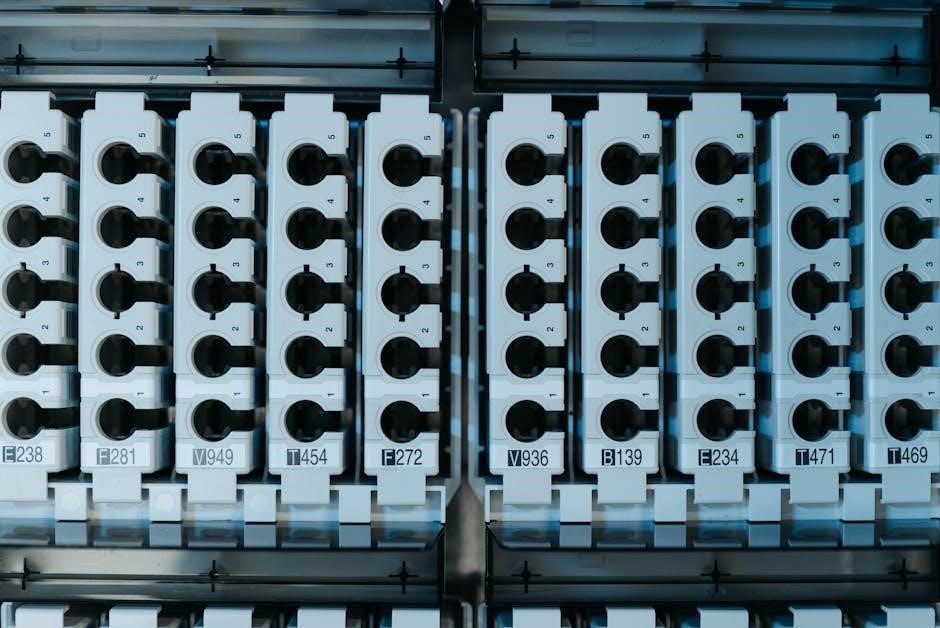
Getting Started with Power Electronics Simulation
Getting started with power electronics simulation involves setting up MATLAB/Simulink, understanding basic circuit components, and utilizing the POWER GUI block for initial circuit analysis and visualization.
3.1 Setting Up the MATLAB/Simulink Environment
To begin with power electronics simulation, install and configure MATLAB/Simulink with the Simscape Electrical and SimPower Systems toolboxes. Ensure proper licensing and update your MATLAB path to include these libraries. Launch Simulink and create a new model, incorporating necessary blocks from the Simscape Electrical library for accurate circuit modeling; Familiarize yourself with the interface and simulation settings to streamline your workflow.
3.2 Basic Circuit Components and Blocks
Simulink offers an extensive range of pre-built blocks for power electronics simulation. These include sources, switches, inductors, capacitors, and resistors, enabling accurate representation of power electronic circuits. The Simscape Electrical library provides detailed models of these components, allowing users to configure parameters such as resistance, inductance, and capacitance. Additionally, custom blocks can be developed for specific devices, enhancing model flexibility and precision. Understanding these components is essential for building accurate simulations of power electronic systems.
3.3 Understanding the POWER GUI Block
The POWER GUI block in MATLAB/Simulink provides an interactive interface for analyzing power electronic circuits. It enables users to visualize waveforms, adjust parameters, and monitor system performance in real-time. This tool simplifies the process of understanding complex circuit behavior, allowing engineers to refine designs and validate simulations effectively. Its intuitive controls and comprehensive visualization capabilities make it an essential tool for power electronics simulation and analysis.
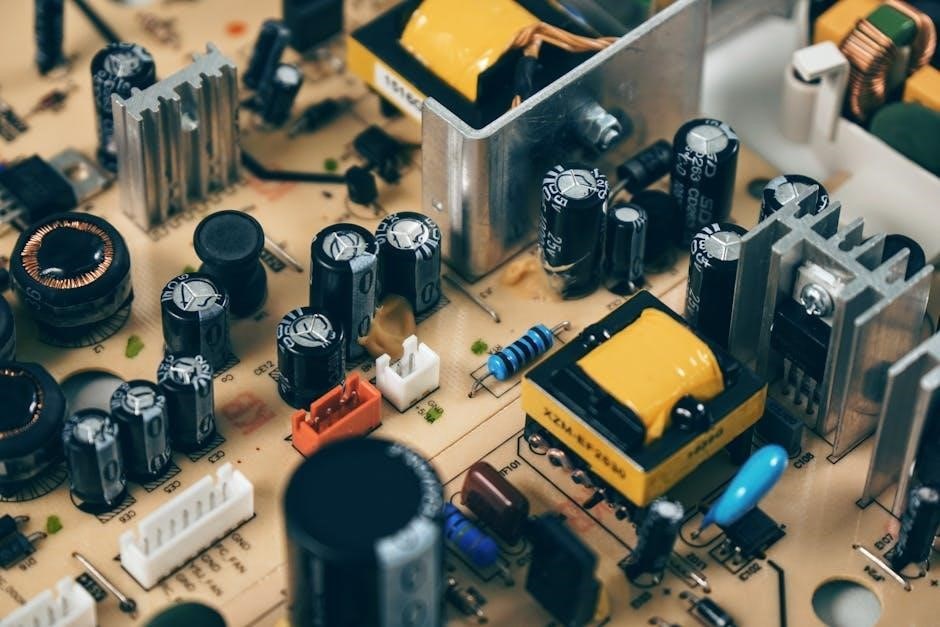
Building and Simulating a Simple Power Electronics Circuit
Learn to construct and simulate basic power electronics circuits using MATLAB/Simulink. Start with simple topologies like half-wave rectifiers or buck converters to understand fundamental concepts and validate designs.
4.1 Designing a Half-Wave Diode Rectifier
A half-wave diode rectifier converts AC voltage to pulsating DC voltage. It consists of a diode, resistor, and AC source. In MATLAB/Simulink, use the POWER GUI block to configure the circuit parameters, such as input voltage and load resistance; Simulate the circuit to observe the input and output waveforms. Analyze the results to understand rectification and harmonic distortion. This simple circuit provides a foundational understanding of power electronics and simulation techniques.
4.2 Simulating a Buck Converter
A buck converter is a DC-DC converter that steps down voltage using a switch, diode, inductor, and capacitor. In MATLAB/Simulink, use the Simscape Electrical library to model the circuit. Configure the switch duty cycle, input voltage, and load resistance. Simulate to observe input and output voltage waveforms. Analyze inductor current and capacitor voltage for stability. This simulation helps optimize component values and ensures efficient power conversion, validating theoretical designs before hardware implementation.
4.3 Analyzing Simulation Results
After simulating a power electronic circuit, analyze the results to validate performance. Use MATLAB’s FFT function for frequency-domain analysis to identify harmonics and calculate THD. Visualize time-domain waveforms to observe voltage, current, and power characteristics. Compare simulated results with theoretical expectations to ensure design accuracy. Analyze efficiency, stability, and transient behavior to optimize component selection and system performance. This step ensures the circuit meets specifications and operates reliably under various conditions.

Advanced Modeling and Simulation Techniques
Advanced techniques involve detailed modeling of switching devices and incorporating nonlinear characteristics for precise simulations. Average models simplify analysis for fast simulations, while nonlinear models capture parasitic effects accurately.
5.1 Modeling Switching Devices
Modeling switching devices accurately is essential for precise simulation of power electronic circuits. MATLAB/Simulink offers tools like Simscape Electrical and SimPower Systems to model switches, diodes, and transistors. These tools enable detailed simulation of switching behavior, including on/off states and parasitic effects. By integrating physical characteristics and control signals, engineers can create realistic models of power electronic devices, ensuring accurate circuit performance analysis and robust design validation.
5.2 Using Average Models for Fast Simulations
Average models simplify power electronic circuit simulations by averaging switching waveforms over a period. This approach reduces computational complexity, enabling faster simulations while maintaining accuracy for system-level analysis. MATLAB/Simulink supports average modeling through libraries like Simscape Electrical, allowing engineers to focus on overall system behavior rather than detailed switching dynamics. This method is ideal for analyzing efficiency, thermal performance, and control strategies in large-scale power electronic systems.
5.3 Incorporating Nonlinear Switching Models
Nonlinear switching models are essential for accurately simulating power electronic circuits with high precision. These models capture the complex behavior of switching devices like IGBTs and MOSFETs, including voltage-dependent capacitances and nonlinear resistances. MATLAB/Simulink’s Simscape Electrical library provides detailed nonlinear models, enabling engineers to analyze parasitic effects and system performance more effectively. This approach is crucial for designing high-efficiency converters and understanding real-world circuit behavior under various operating conditions.
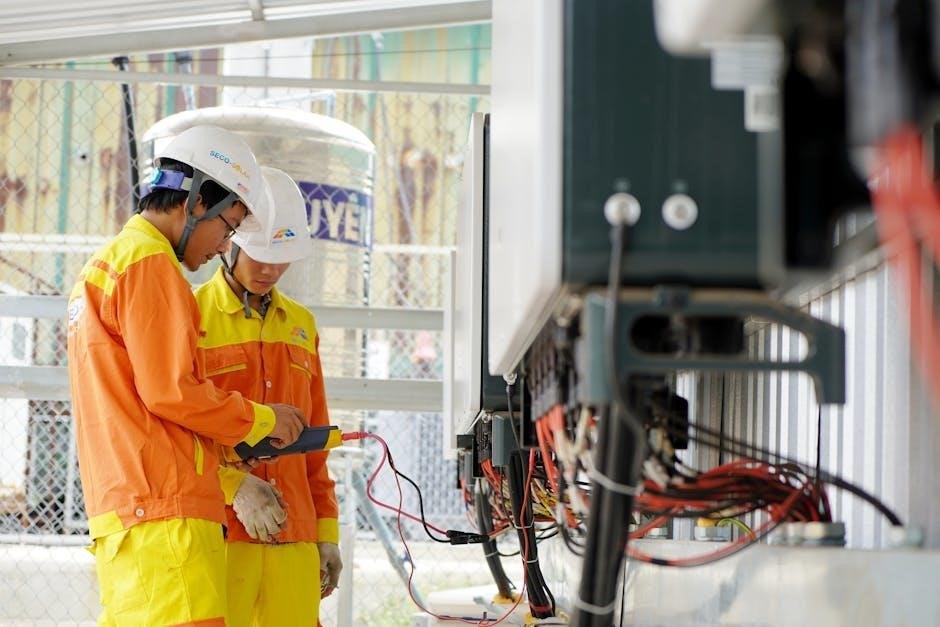
Design Optimization and Controller Development
Optimizing power electronic designs involves selecting components and using MATLAB’s Optimization Toolbox to enhance efficiency. Controllers are developed to regulate converters, ensuring stability and performance, leveraging Simulink for precise tuning.
6.1 Selecting Semiconductor Components
Selecting the right semiconductor components is critical for power electronic circuits. MATLAB/Simulink aids in evaluating components like IGBTs, MOSFETs, and diodes based on voltage, current, and switching frequency. Simulation tools allow engineers to analyze component behavior under various conditions, ensuring optimal performance and reliability. This process minimizes the risk of component failure and enables efficient circuit design, reducing the need for costly iterations and physical prototypes. Accurate selections ensure system efficiency and durability.
6.2 Using the Optimization Toolbox
The Optimization Toolbox in MATLAB enables engineers to optimize power electronic circuit designs by minimizing specific performance metrics, such as total harmonic distortion (THD) or switching losses. By defining objectives and constraints, users can iteratively refine parameters like switching angles or component values. This tool accelerates the design process, ensuring optimal performance while reducing trial-and-error iterations. It seamlessly integrates with Simulink, allowing for automated testing of optimized designs in a simulation environment. This enhances overall system efficiency and reliability.
6.3 Designing Controllers for Converters
Designing controllers for power electronic converters involves creating algorithms to regulate output parameters like voltage or current. MATLAB/Simulink provides tools for modeling and tuning controllers, such as PID controllers or advanced strategies like sliding-mode control. These controllers can be tested in simulation, ensuring stability and efficiency before implementation. The environment also supports automated tuning, reducing design time and improving system performance. This approach ensures robust control systems for various converter topologies.

Analysis of Simulation Results
Simulation results validation and optimization are critical for ensuring circuit performance. MATLAB/Simulink offers tools for time-domain analysis, frequency-domain analysis, and THD measurement to evaluate circuit behavior and efficiency.
These analyses help identify distortions, stability issues, and dynamic responses, enabling precise adjustments for optimal performance. Visualization tools further aid in understanding complex circuit dynamics effectively.
7.1 Time-Domain Analysis
Time-domain analysis examines how voltage and current waveforms evolve over time, revealing transient responses, steady-state behavior, and switching patterns in power electronic circuits. MATLAB/Simulink provides tools like scopes and data logging to capture and visualize these waveforms. This analysis is crucial for identifying issues like voltage overshoot, current spikes, or oscillations, which can affect efficiency and stability. Engineers use time-domain results to optimize circuit performance and ensure reliable operation under varying loads and conditions, such as in DC-DC converters or motor drives.
7.2 Frequency-Domain Analysis
Frequency-domain analysis focuses on understanding the harmonic content of voltage and current waveforms in power electronic circuits. Using MATLAB/Simulink, engineers can perform Fast Fourier Transform (FFT) to identify harmonic distortions and resonant frequencies. This analysis is critical for evaluating Total Harmonic Distortion (THD), ensuring compliance with standards, and designing effective filtering systems. By examining frequency spectra, designers can optimize circuit performance, reduce electromagnetic interference, and improve overall power quality in converters and inverters.
7.3 Total Harmonic Distortion (THD) Analysis
Total Harmonic Distortion (THD) measures the distortion in voltage or current waveforms due to harmonic frequencies. In power electronics, THD analysis is crucial for ensuring power quality and compliance with standards. MATLAB/Simulink provides tools to calculate THD using FFT, enabling engineers to evaluate harmonic content and optimize filtering systems. Lower THD reduces electromagnetic interference and improves converter efficiency, ensuring reliable operation in power electronic systems and inverters.
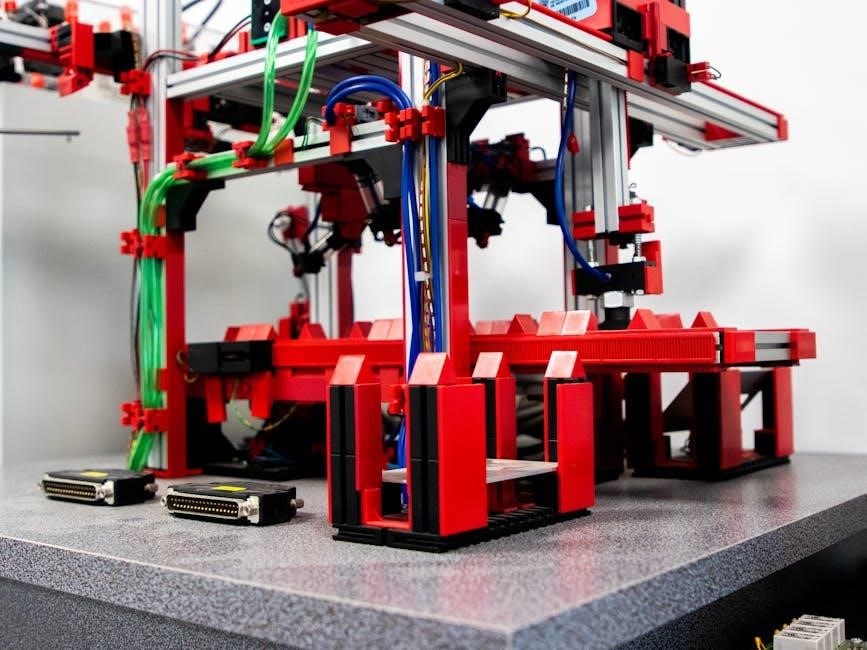
Troubleshooting Common Simulation Issues
Common simulation issues include convergence errors, unexpected behavior, and incorrect results. Debugging involves checking circuit parameters, solver settings, and interpreting error messages for accurate troubleshooting and resolution.
8.1 Debugging Circuit Models
Debugging circuit models involves identifying and resolving errors in simulation setups; Start by verifying component parameters and connections. Check for mismatched impedances, incorrect switch settings, or improper grounding. Validate block configurations, especially in Simulink, to ensure correct functionality. Review solver settings for appropriate simulation time, step size, and tolerance levels. Interpret error messages carefully to pinpoint issues. Iterate on the model, testing incremental changes to isolate and fix problems effectively.
8.2 Resolving Convergence Problems
Convergence issues often arise in power electronics simulations due to numerical instability or improper solver settings. To resolve these, adjust solver parameters such as step size, tolerance, and maximum iteration limits. Use implicit solvers for stiff systems or circuits with switching devices. Ensure initial conditions are consistent with the circuit’s expected behavior. Apply damping techniques or enable parallel computing for complex models. Monitor simulation logs to identify and address convergence failures effectively.
8.3 Interpreting Error Messages
When simulating power electronics circuits in MATLAB/Simulink, error messages often indicate issues like algebraic loops or singularity problems. These errors typically arise from improper model configurations or numerical instability; To resolve them, examine the error details in the Simulation Data Inspector or Command Window. Check for inconsistent initial conditions, redundant equations, or invalid parameter values. Use the Solver Profiler to identify suitable solvers and adjust step sizes. Simplifying the model or adding delay blocks can also help eliminate algebraic loops, ensuring smooth simulation execution.

Real-World Applications of Power Electronics Simulation
Interpreting error messages is crucial for troubleshooting simulations. MATLAB/Simulink provides detailed error logs in the Simulation Data Inspector or Command Window, highlighting issues like algebraic loops or numerical instabilities. Common errors stem from improper model configurations or conflicting initial conditions. Use the Solver Profiler to identify suitable solvers and adjust parameters. Simplifying models or adding delay blocks can resolve algebraic loops, ensuring smooth simulation execution and accurate results.
9.1 Microgrid Simulation
MATLAB/Simulink is widely used for microgrid simulation, enabling the design and analysis of distributed energy systems. It allows modeling of solar, wind, and energy storage systems, as well as grid-tied and islanded operations. Simulink’s graphical interface simplifies the integration of renewable sources, energy storage, and power electronics. Engineers can test control strategies, such as load sharing and voltage regulation, ensuring stable and efficient microgrid performance. This simulation capability accelerates the development of sustainable energy solutions;
9.2 Laptop Charger Circuit Analysis
Simulating a laptop charger circuit in MATLAB/Simulink enables detailed analysis of its power electronic components. The circuit typically includes a DC-DC converter, such as a buck or boost topology, to regulate voltage. Using Simulink, engineers can model and simulate the charger’s behavior, analyzing parameters like efficiency, voltage ripple, and transient response. The Power GUI block simplifies the analysis of waveforms and system performance, ensuring the charger operates efficiently and reliably under various load conditions.
9.3 Motor Control Systems
Simulating motor control systems in MATLAB/Simulink allows engineers to design and analyze power electronic circuits for controlling electric motors. These systems often involve converters, such as DC-AC inverters, to drive motors efficiently. Using Simulink, detailed models of motor control systems can be created, simulating dynamic behavior under various load conditions. The environment enables debugging and performance analysis, ensuring reliable and efficient motor operation in applications like washing machines and industrial drives.
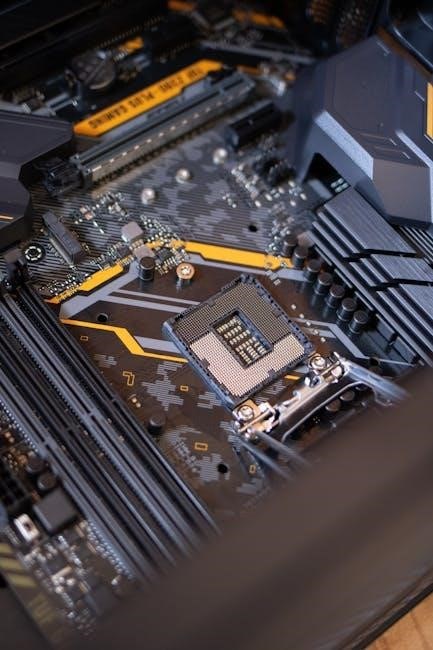
Future Trends in Power Electronics Simulation
Future trends include integrating renewable energy systems, developing advanced switching devices, and leveraging AI-driven simulation tools for faster and more accurate power electronics circuit analysis.
10.1 Integration with Renewable Energy Systems
Simulink enhances renewable energy system integration by modeling solar and wind power converters, enabling grid compatibility studies. MATLAB’s optimization tools optimize energy storage and inverters for efficient grid tie-in, ensuring stability and reducing harmonic distortion. Real-time simulations validate control strategies, crucial for microgrids and smart grids, fostering sustainable energy solutions. This integration accelerates the adoption of renewable energy sources in power systems.
10.2 Advanced Switching Devices
Simulink’s advanced tools enable modeling of cutting-edge switching devices like IGBTs and MOSFETs, crucial for high-efficiency power electronics. Custom blocks and Simscape Electrical simplify simulating intricate switching behaviors, while SimPower Systems supports detailed nonlinear models. These capabilities allow engineers to analyze device performance under various conditions, optimize designs, and integrate advanced switching strategies into renewable energy systems and high-frequency applications, driving innovation in power electronics.
10.3 AI-Driven Simulation Tools
AI-driven simulation tools are revolutionizing power electronics design by integrating machine learning and neural networks. MATLAB/Simulink’s AI toolbox enables predictive modeling, optimizing circuit performance and reducing design iterations. AI enhances simulation accuracy, automates parameter tuning, and streamlines complex system analysis. This integration accelerates innovation, allowing engineers to explore advanced topologies and improve simulation efficiency, ensuring faster and more reliable development of modern power electronics.
Simulation in power electronics with MATLAB/Simulink enhances design efficiency and accuracy. Exploring advanced resources like textbooks and online courses can deepen expertise in this dynamic field.
11.1 Summary of Key Concepts
Simulation of power electronics circuits with MATLAB/Simulink is a powerful approach for designing, analyzing, and optimizing power electronic systems. Key concepts include modeling using Simscape Electrical, simulating switching devices, and analyzing results through time and frequency domain methods. Tools like the POWER GUI and SimPower Systems enable detailed circuit analysis. Optimization techniques and controller design further enhance system performance. These methodologies collectively facilitate efficient and accurate power electronics development, ensuring robust and reliable designs for real-world applications.
11.2 Recommended Resources for Advanced Study
For advanced study, key resources include books like “Simulation of Power Electronics Circuits with MATLAB/Simulink” by Farzin Asadi and research papers by S Khanahamedova. Online courses on Coursera and MATLAB tutorials provide hands-on practice. The SimPower Systems Toolbox and Simscape Electrical documentation offer in-depth guidance. Additionally, repositories on GitHub, such as Apress’s Simulation of Power Electronics Circuits, provide practical examples and code for further exploration. These resources collectively enhance theoretical and practical understanding of power electronics simulation.

